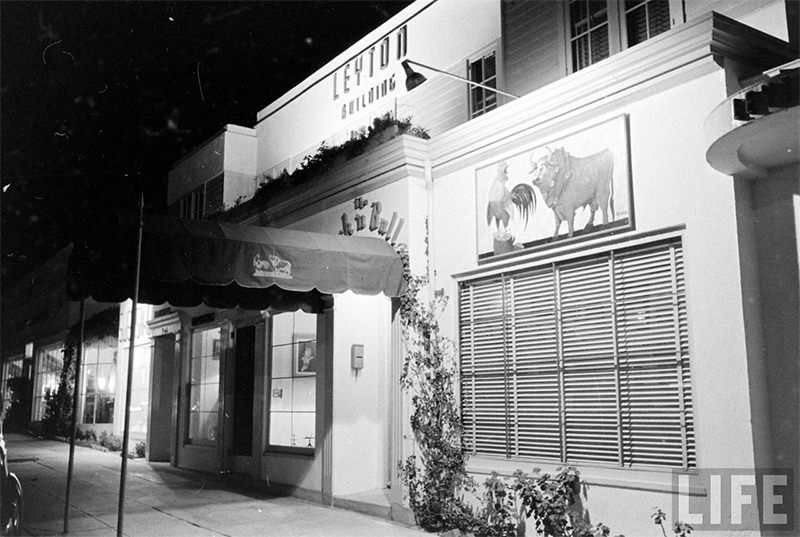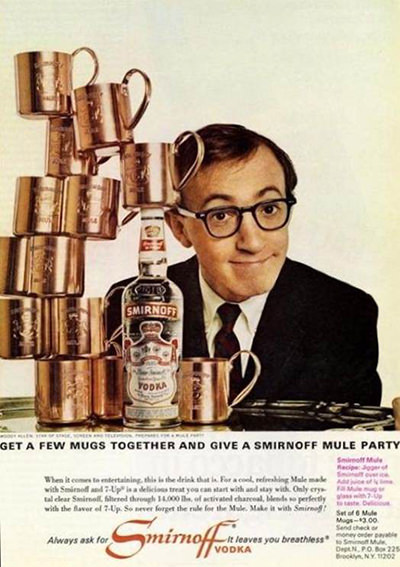Imagine plonking down $40 for a cocktail. Even for big spenders, that probably seems a little ridiculous – until you realize you’ll be getting that money back after you return your glass. You might think the whole thing sounds silly. After all, we’re adults, we’re not going to steal drinkware. But when it comes to one particular cocktail, we might. That drink would be the Moscow Mule, a vodka concoction traditionally served in a glistening copper mug.
Moscow Mules are beautifully presented, delicious, and easy to make, so it’s no wonder they – and their housing units – are pretty popular. It seems that the copper mug has become intrinsically linked to the Mule, so much so that you’d think the drink was manufactured on behalf of the world’s copper workers. More than that, the Moscow Mule has an old-time, Eastern European feel to it. It is, after all, called a Moscow mule. You might think that this vintage drink has a centuries-old history. But in actuality, the Moscow Mule was a fairly modern joint marketing effort between the (then) sole American vodka distillery and the ginger-beer-loving owner of an L.A. restaurant.

In the late 1930’s, John G. Martin, an executive at A. Heublein Corporation, helped get the company to buy Smirnoff. The vodka was anonymous in taste, appearance, and reputation, so he did what any smart brand ambassador does – he teamed up with an esteemed bar man. He found himself at L.A. restaurant Cock’n Bull, which was owned by Jack Morgan, a guy who also had his own agenda: pushing his ginger beer to his patrons. The two put their boozed up brains together and came up with the Moscow Mule: a simple drink consisting of vodka, ginger beer, and lime juice. The spice of the ginger and tang of the lime were a good match for the neutrality of vodka, so the drink was perfect for people who wanted a cocktail with subtle attitude. The plan worked. By 1942, Inside Hollywood was raving about the celeb-savvy drinking, writing:
There is a new drink that is a craze in the movie colony now. It is called “Moscow Mule.”

Just where did that name come from? No one really knows, but the guess it that the “Moscow” part came from the fact that at that point, Americans strongly associated vodka with Russians. Some say the word “mule” is an homage to the “kick” of the ginger, but we think that sounds like a stretch. Still, something about the two words together worked, even if the Mule wasn’t actually Russian. The American heritage of the drink didn’t stop people from taking issue with the pro-Soviet association circa the Cold War Era. One reporter even suggested changing the name of the drink to the “Washington Wallop.” However, Cock’n Bull bartender Wes Price thought that was absurd and declared that, “Art is art… [changing the name would] be like refusing to listen to Tschaikowsky’s [sic] music.” It’s particularly ridiculous when you consider just how American the marketing behind the Moscow Mule is – it’s practically a beacon of capitalism.
No matter where it came from, the Moscow Mule had instant branding power. While people have pointed out that it wasn’t uncommon for an English tavern like Cock N’Bull to serve all of their drinks in copper mugs, the Moscow Mule became such an iconic force that the drink and the vessel are now inseparable. And it’s the cocktail’s awesome, throw-back branding that’s no doubt helped it make a tremendous comeback today.
Bars are innovating the Mule as they see fit. The Underdog in Manhattan has a Mezcal Mule, while chain restaurant LongHorn Steakhouse served a Montana Mule with bourbon. The choices for ‘bucks’ – cocktails made with ginger beer and citrus – are endless. However, what really sticks about the Moscow Mule is that it doesn’t taste like alcohol, yet it still has culinary substance. It’s refreshing and light, but it has personality.
There is one downside of a Moscow Mule comeback: an “epidemic” of copper mug theft. While we get the impulse to snatch one up from your local cocktail bar, resist. They’re only around $15 a pop at any home supply store. Then again, maybe the illicit aura around the Mule plays ever so slightly into its appeal.
